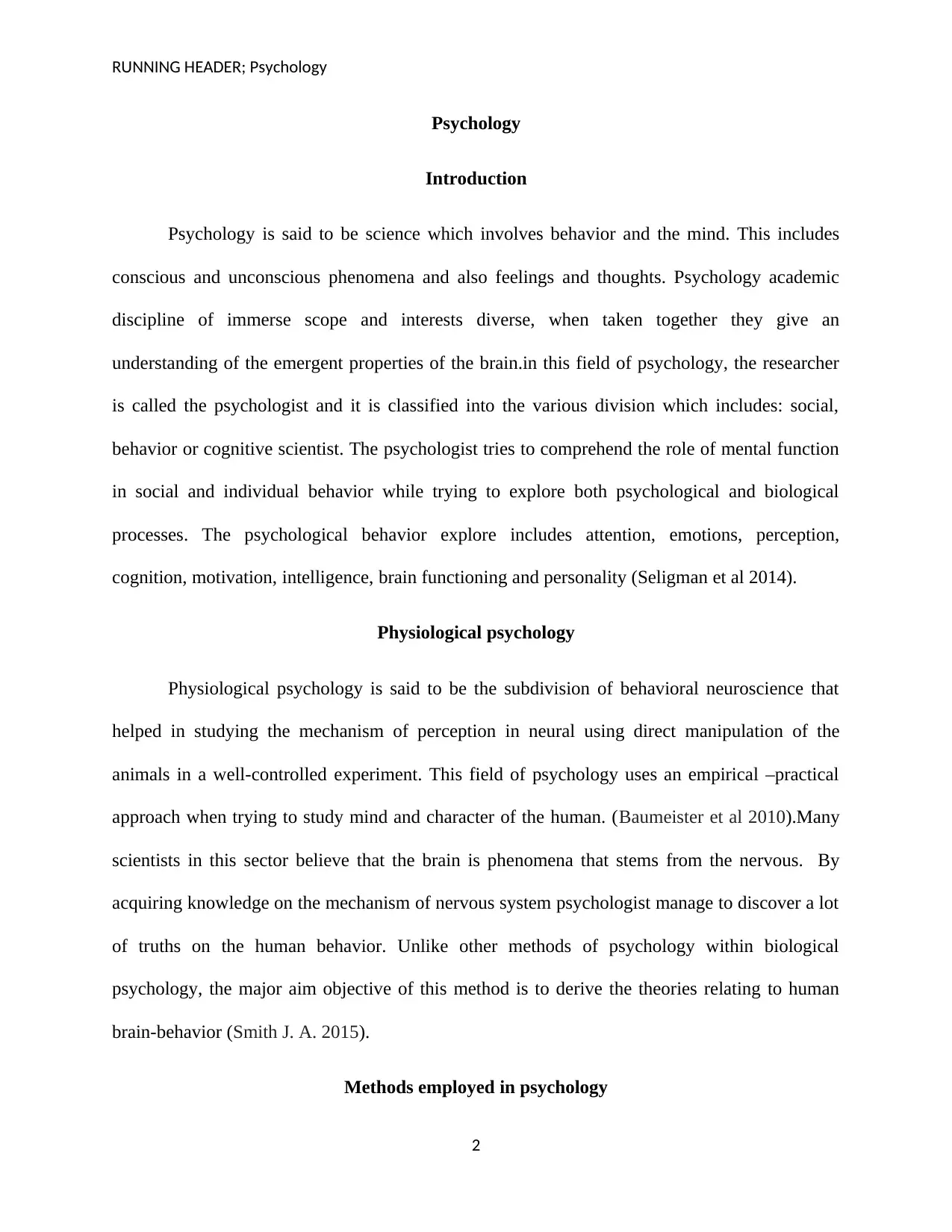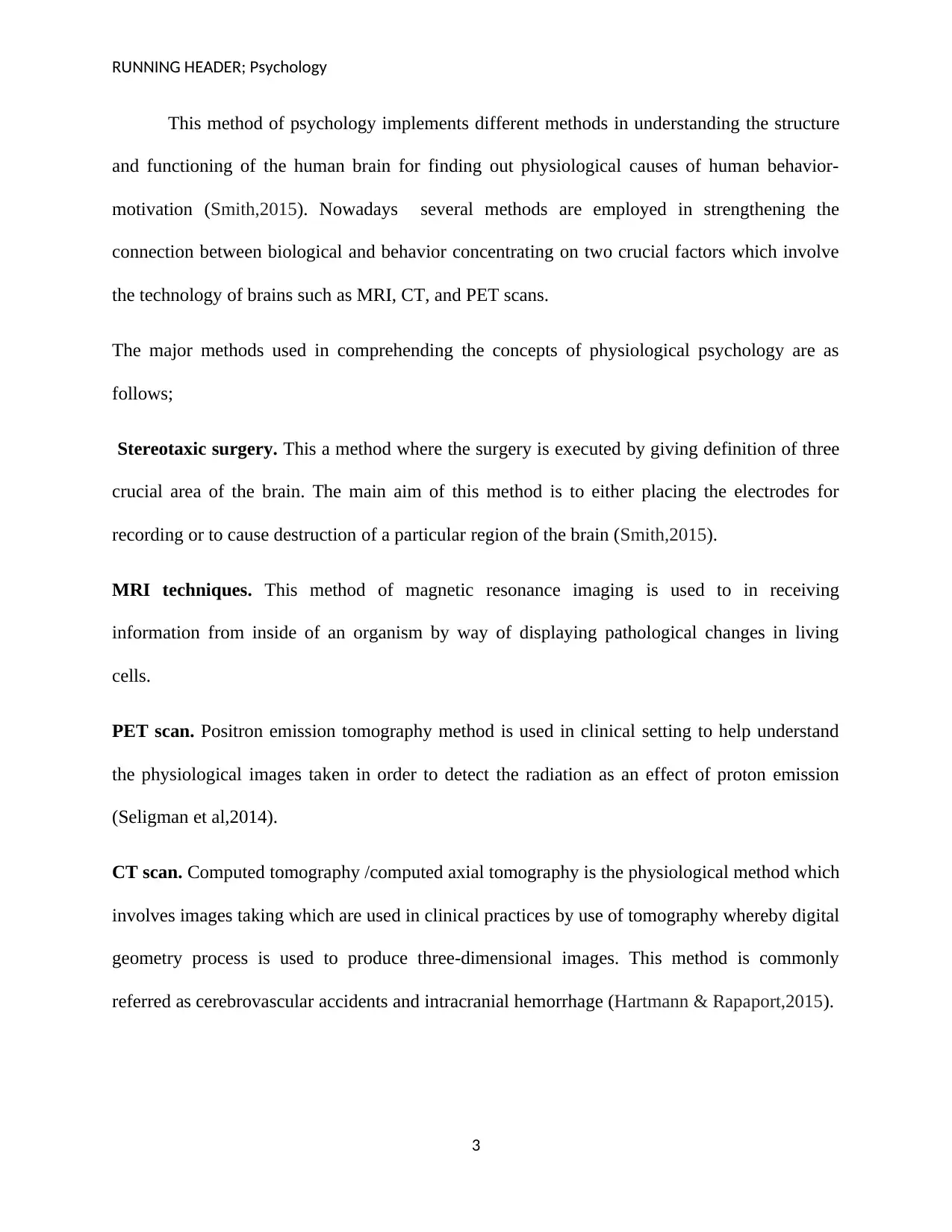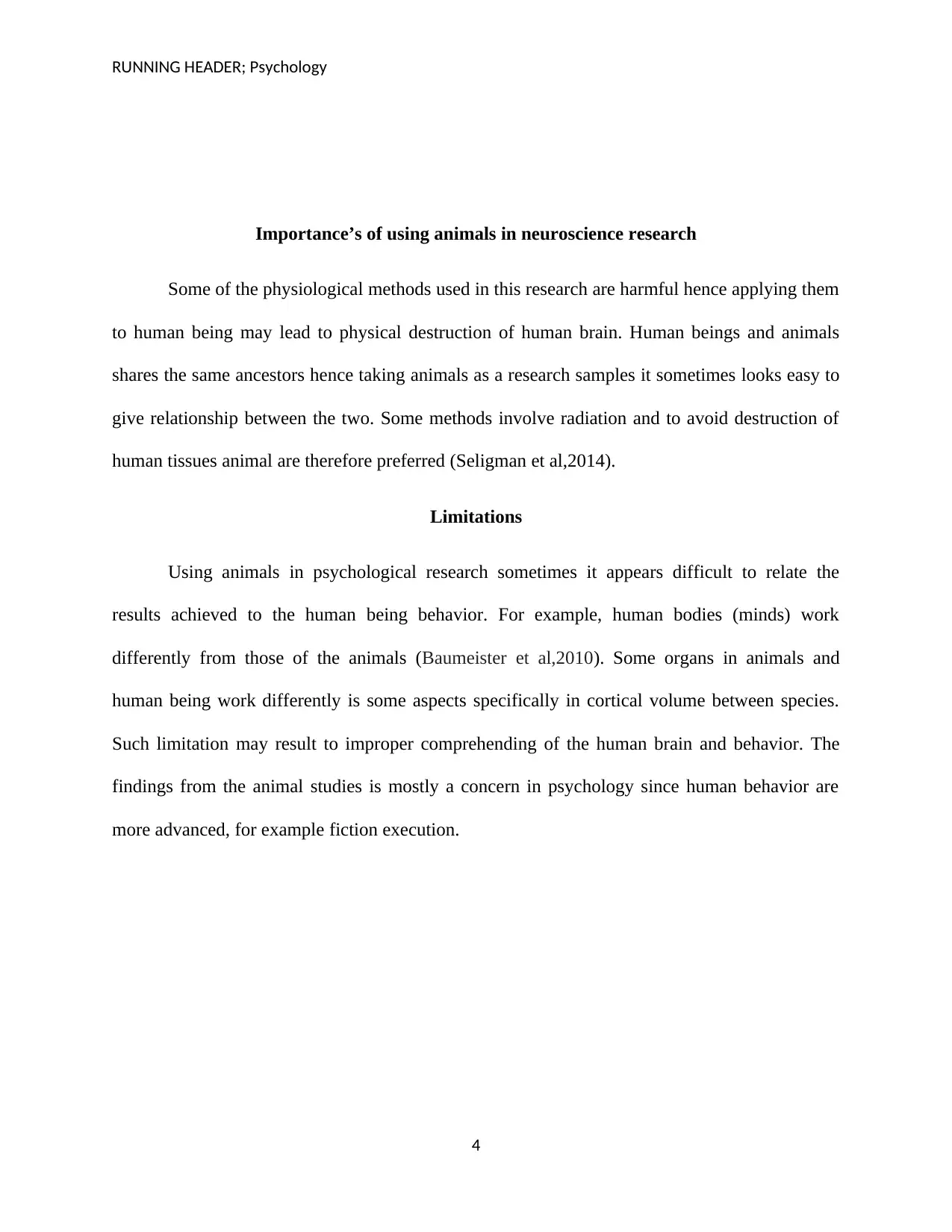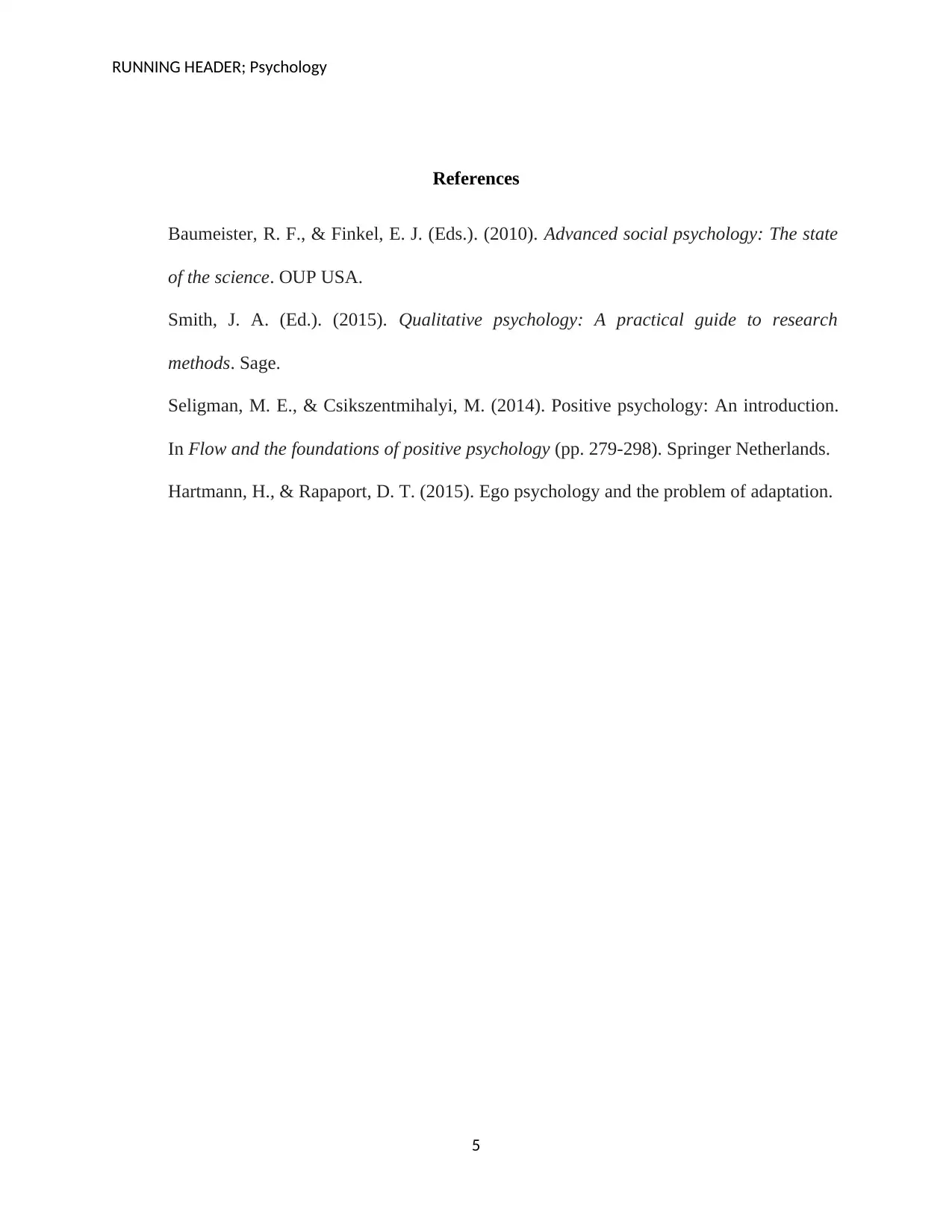PSY290 - Physiological Psychology: Exploring Research Methods & Ethics
VerifiedAdded on 2023/06/11
|5
|847
|450
Report
AI Summary
This report delves into the realm of physiological psychology, defining it as the scientific study of behavior and the mind, encompassing both conscious and unconscious processes. It highlights the role of psychologists in understanding mental functions in relation to social and individual behavior, with a focus on exploring psychological and biological processes. A significant portion of the report is dedicated to the methods employed in physiological psychology, including stereotaxic surgery, MRI techniques, PET scans, and CT scans, detailing their applications in understanding brain structure and function. It also addresses the importance and limitations of using animals in neuroscience research, acknowledging the ethical considerations and differences between animal and human physiology. This document provides a comprehensive overview of the tools and challenges in physiological psychology research. Desklib offers a platform to explore similar solved assignments and past papers.
1 out of 5











![[object Object]](/_next/static/media/star-bottom.7253800d.svg)